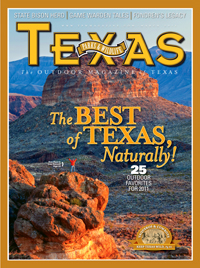
Flora Fact: Don’t Mind If I Do
Texas paintbrush mooches nutrients from nearby plants.
By Sheryl Smith-Rodgers
Attention, wildflower watchers. This spring, take heed of Texas paintbrushes, particularly those intermingled with bluebonnets. Because — gasp! — we’re about to expose a dark side to their scarlet beauty.
As early as 1881, horticulturalists suspected that Castilleja indivisa sponged off its neighbors. A century later, numerous studies — including one at the Lady Bird Johnson Wildflower Center — confirmed the fact. On the sly, Texas paintbrush and several perennial species mooch nutrients from bluebonnets, grasses and other plants. How? They grow specialized roots that siphon water and minerals from nearby root systems.
Of our nine native paintbrushes, only Castilleja indivisa is exclusively an annual. Flower spikes of paintbrushes measure 3 to 8 inches high and bloom from March through May but may linger into summer. Actually, a paintbrush’s small, tubular flowers aren’t very dazzling. Rimmed in soft pink hues, they vary from whitish to pale green. Credit for showy colors goes to the paintbrush’s leaf-like bracts. Tipped with brilliant orange-red (like a paintbrush), they attract nectaring hummingbirds and insects (wildflower enthusiasts, too).
Like other hemiparasites, paintbrushes can survive on their own. But, as studies showed, they grow more vigorously around company. Not so for host plants. Without sufficient moisture, they’ll wilt and even die.

